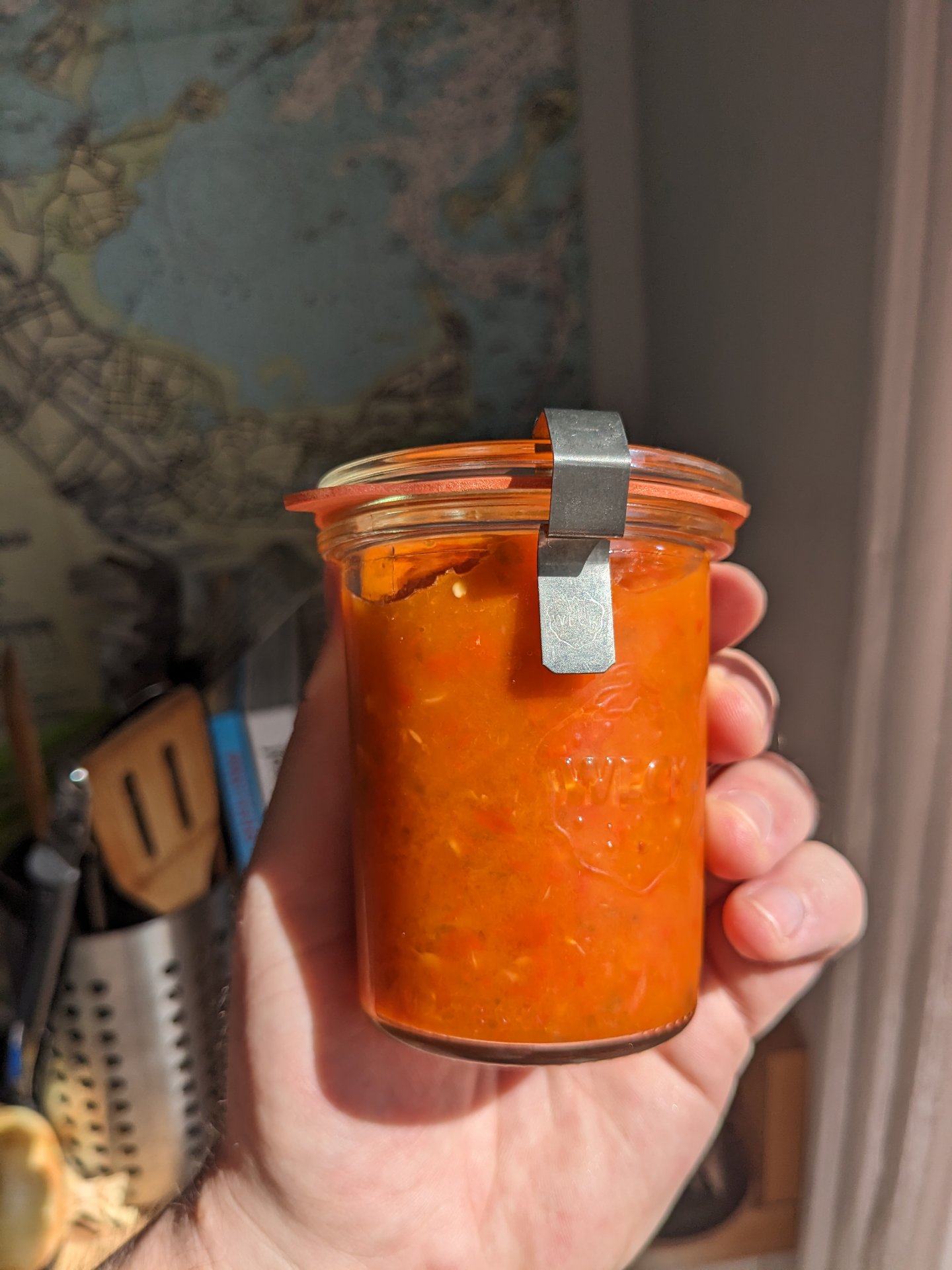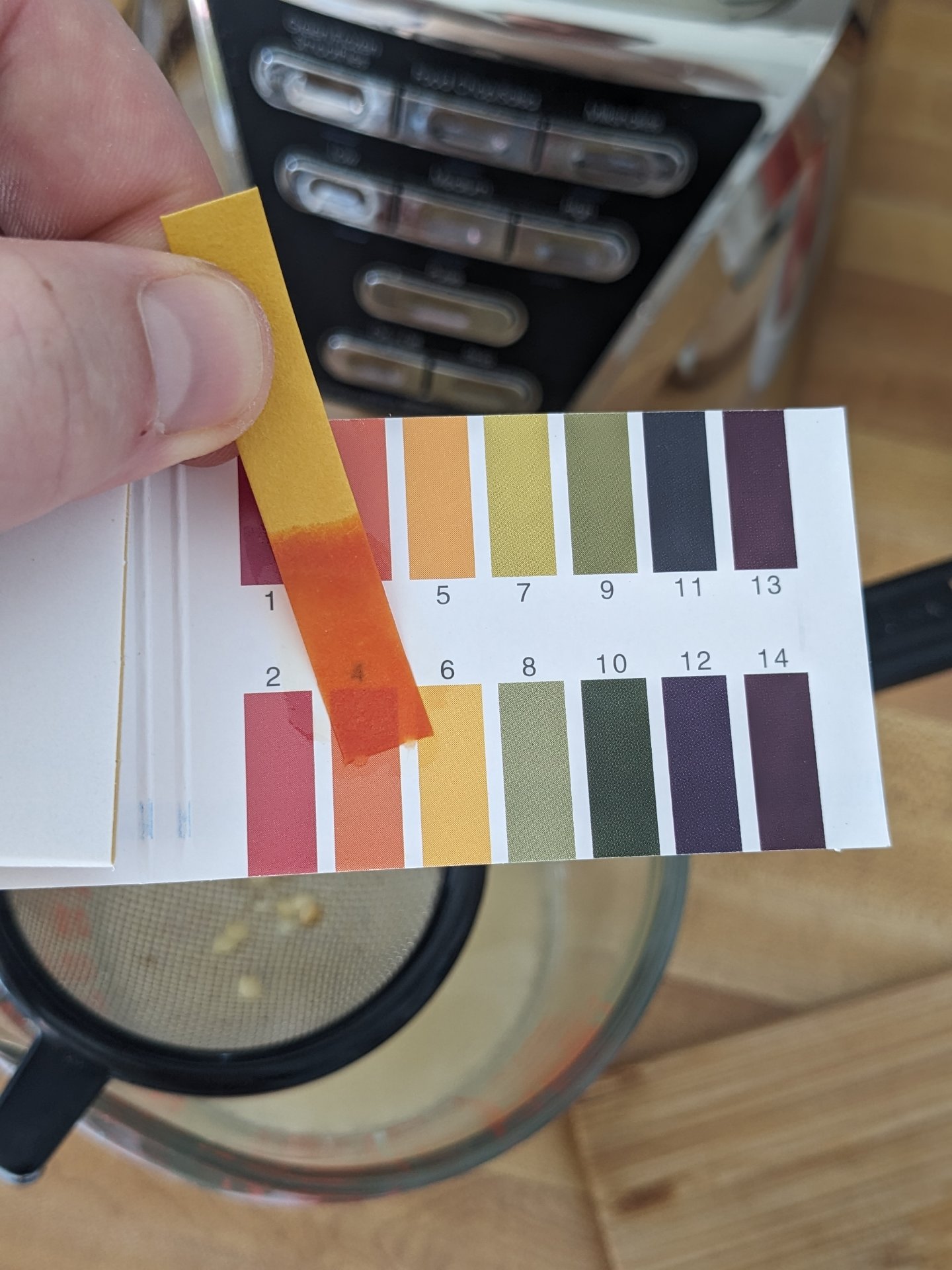I recently made some lacto-fermented hot sauce! Check it out -

Very good color! And incredibly spicy. A lot of coughing occurred in the making of this tiny jar.
The ingredients for this were simple - just some whole cayenne peppers from the farmer's market, a few cloves of garlic, water, and sea salt. The "lacto" in the name refers to the lacto-fermentation process, where naturally-occuring Lactobacillus bacteria convert sugars in the food to be fermented (peppers in this case) into lactic acid, which helps preserve food for longer. The salt in the brine here creates an environment that only the lacto bacteria can survive in and prevents other harmful bacteria from growing in the process.
Note: I am very new to this process and it can be dangerous if done wrong! I referred to the guide at https://peppergeek.com/fermented-hot-sauce/ a lot, and cross-referenced key details with other resources online to make sure I was getting the ratios right and not poisoning myself.
Here are the steps I ended up performing:
- Cut up 149 g peppers and garlic and placed in a glass jar
- Filled with water to fully cover the peppers. Total weight of the jar's contents (peppers, garlic, and water) is now 415 g.
- We want to 2-4% of the pepper-and-water mass of sea salt. I intended to add 12 g salt (about 3%). I accidentally added 18 g instead, so 4.3%.
- Allowed to sit in the dark for a week at room temp, and then in the fridge for another week.
A note on botulism - be careful! Botulism is a very real risk, and I'd recommend reading multiple sources to get good info on how to not develop botulinum toxin during fermentation. Peppergeek says a brine pH of 3.5 or below will prevent botulinum bacteria from growing. I tested my brine with some pH test strips:

I'd say I'm measuring between 3 and 4, but it's hard to say. It turns out there are also digital pH meters available online for under $20 so that might be a better investment than the 100 pH test strips for $6 I bought. Another point of anecdotal evidence: I tried some of this fermented sauce hours before writing this and I don't have botulism now so I think it worked out in this case.
Gallery
Freshly cut peppers and garlic packed in brine, September 14th:

Fermented peppers after two weeks, October 1. You can kind of make out the fermentation weight sitting on top
of the peppers. It's a piece of clear glass so it's hard to see but it is there:

You can see some white material floating around in the brine if you look closely. I believe that is
Kahm yeast. I was very worried when
I saw it at first because you really don't want to develop mold during fermentation, but it turns out Kahm yeast
is a pretty common occurence and not harmful at all. Apparently mold looks fuzzy whereas the yeast is more like a
solid layer, which is what I had. Again, definitely good to refer to other resources to distinguish harmless
yeast vs. toxic mold if you try this out!
Fermented contents of the jar with the brine poured off:

Making the Sauce
To make the hot sauce, the peppers and garlic were just blended up in a blender! Some of the brine was added back in this thin the sauce to a more usable consistency. The final result came out pretty chunky - I think I need more peppers or maybe a food processor instead of a blender next time.
The flavor is fantastic though! I'm excited to try this again now that I've had a successful run!